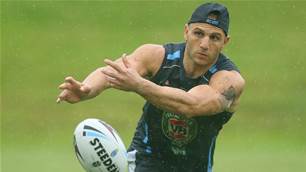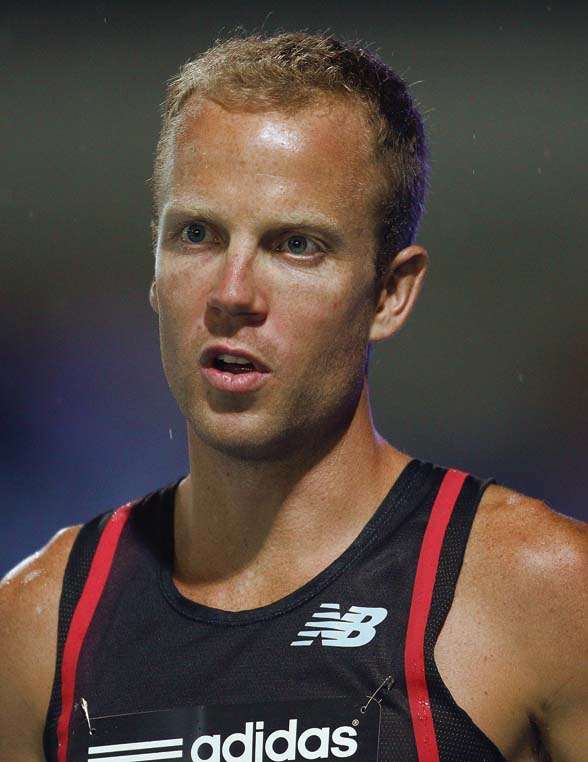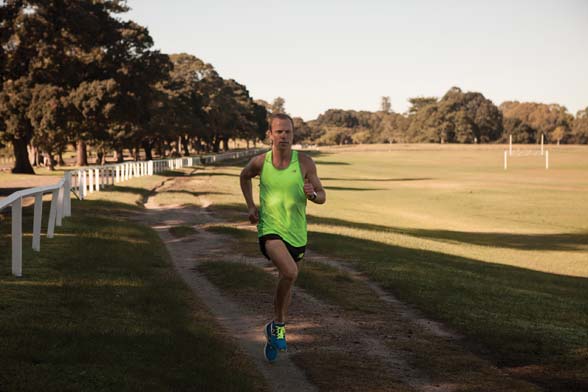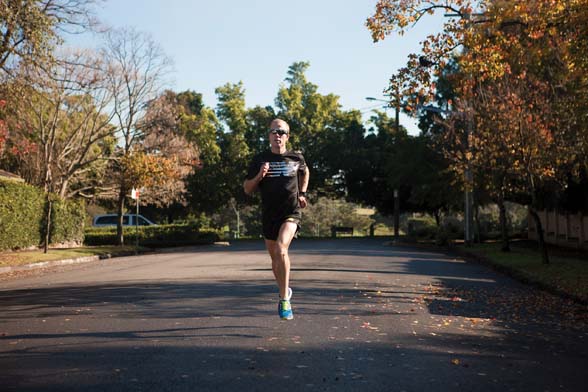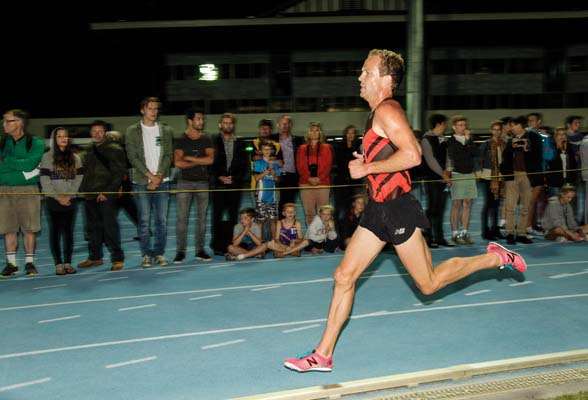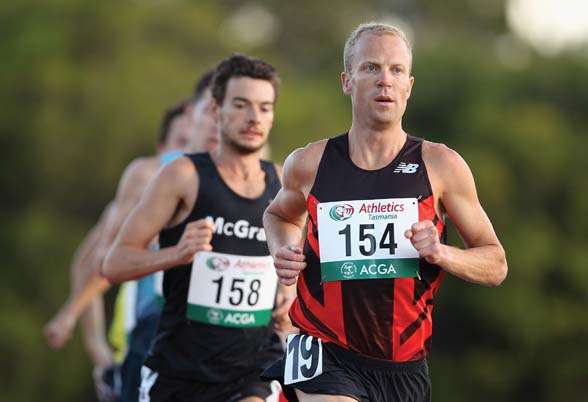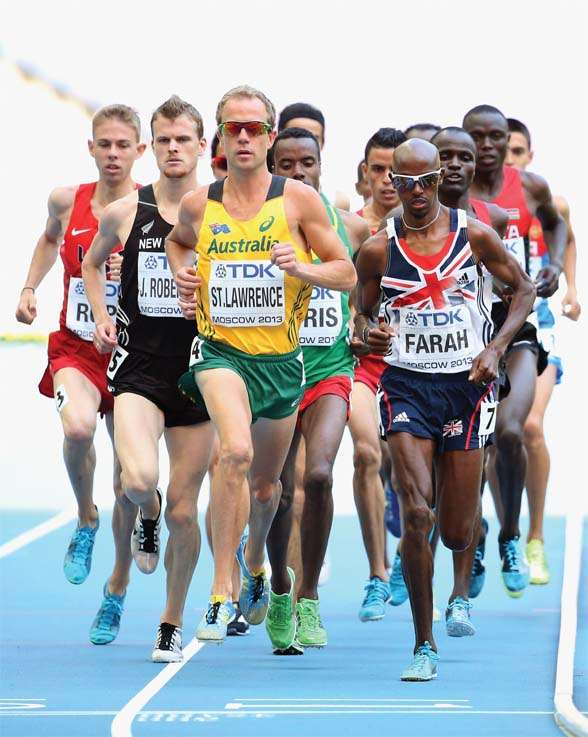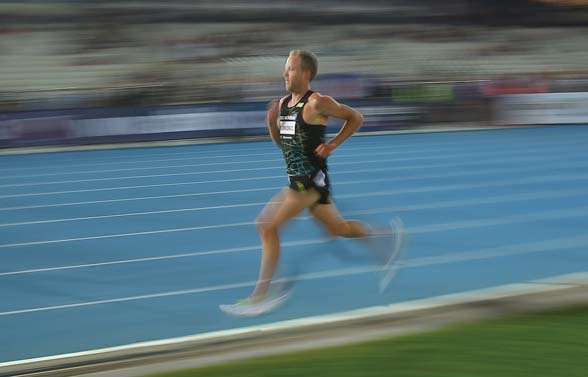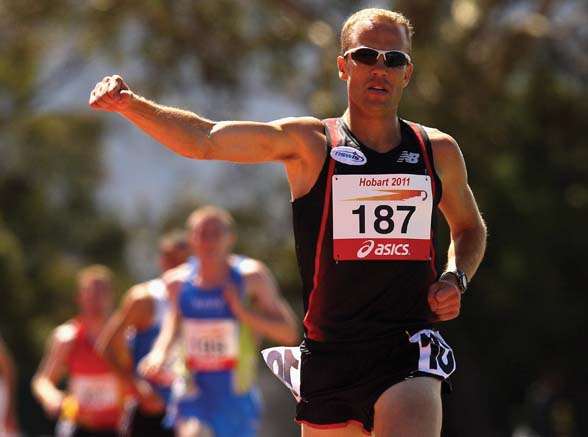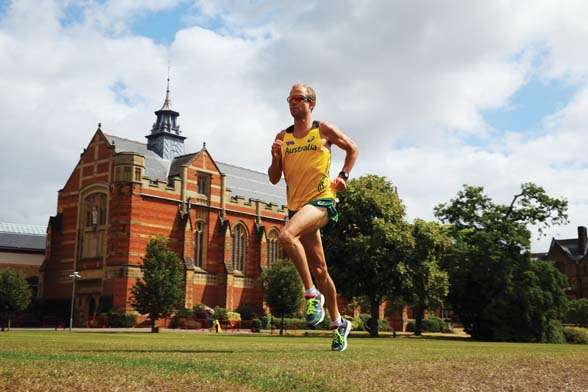Meet the man who quit running to focus on drinking.
Ron Clarke's recent passing had many recalling the so-called “Golden Era” of Australian athletics – and lamenting our diminished standing on the world stage in distance running. Which is really unfair to superb athletes like Ben St Lawrence. He may not (yet!) have knocked off the Africans at a major meet, but he runs faster over 10k than Ron Clarke or Steve Moneghetti or Craig Mottram ever did – he’s been the Australian record-holder for the distance since 2011. And if things come together he is poised to put his name in lights: his best time puts him in the top ten in the world, and if he’s able to stay healthy and produce his best at this month’s IAAF World Championships in Beijing, the 32-year-old from Sydney could find himself in the running for a spot on a podium. Ten years ago he was a borderline lager lout, which makes his rise to the top of the athletics tree all the more remarkable. He told Inside Sport editor Graem Sims how he does it.
BEGINNINGS
“I was always a talented runner when I was a kid and loved racing. I had the goal to run at the Olympics, but through high school I just wanted to have fun with it, not be too serious. The goal was to start running seriously when I finished high school, but I ended up at Charles Sturt Uni at Bathurst living on campus. It’s a great university, but it has a strong social culture, and I got a little bit carried away. I was doing an exercise science and social science/psychology degree while I was there, but I was a pretty easily distracted teenager and got into the binge-drinking lifestyle.
“During that first year I was always feeling guilt that I wasn’t doing as much training as I should; I was constantly disappointed in myself for drinking and all that sort of stuff. So instead of quitting drinking to focus on my running, I thought, ‘I’ll quit running and focus on my drinking for a year.’ That would take that guilt out of it, I would get it out of my system, and in my second year I’ll take my running seriously. Unfortunately, I found it really difficult to break those habits and one year turned into two turned into three. By the end of it I’d put on a lot of weight and I was quite unhealthy and it looked like my running goals would never happen.
“I graduated and got a job as a door-to-door salesman selling pay TV. That took me to Victoria in 2006 – when the Commonwealth Games were on. I was always a fan of the sport, so I got tickets and found myself seeing people running around in the green and gold who I’d run with at school. Then I saw that race with Craig Mottram versus the Kenyans in the 5k, with 80,000 screaming fans, and it was at that point that I wondered if I could get to an elite level of athletics. In fact, I was a bit hungover that day and once again feeling a bit guilty, but I said to my mate, ‘I’m going to see if I can make the next Commonwealth Games.’ And he laughed at me and said, ‘Mate, if you make the next Commonwealth Games, I’ll come and watch you.’ And four years later I was in Delhi and finished seventh in the 5k and the 10k, with my mate there in the stands.”
FIRST STEPS
“At first it was just about getting moving, just some really slow jogging. I also bought a bike and started riding a bit. Then I began fixing up my social habits. I surrounded myself with other people who were active. I’m a very social person, so I didn’t want to separate my exercise from my social life, so when I moved to Sydney I joined a squad of recreational runners. We’d meet up on a Saturday or Sunday morning to run, then go out for breakfast afterwards. Or we might go out to the pub for a meal after our mid-week sessions; it became a bit of a social outlet. So I was getting some exercise done, meeting new people and having a bit of fun as well. Then once you get moving it’s about progressively increasing what you’re doing and your body will adapt. So you stress your body a bit and fuel yourself well and you recover, and then you stress it a little bit more. And over time, particularly with endurance-type events, you make steady progress.
“The first year wasn’t much for me – I’d put on about 20kg during uni; I remember seeing 86 on a set of scales once back then, while I run now at 64-65kg. I definitely carried a lot of excess weight, which gradually came off. Then, for the next couple of years, it felt like every event I entered was a PB. I had all the aches and pains and niggling little injuries you get when you’re really pushing your body hard, but I didn’t have any major injuries.
“In 2008 I made the team for the World Cross Country Championships in Scotland. That was my first major green and gold team. I didn’t have a great run over there – I was 120th – but I was on a team with Craig Mottram and some of the guys I’d really admired over the years, and it was quite a surreal experience. Then in 2009 I had another good year – I ran a 5k in LA that knocked 12 seconds off my best time in what was then a B standard for the Worlds in Berlin that year. I didn’t get selected, but that just made me really hungry, and the next year I ran qualifiers for the 5k and the 10k for the Comm Games in Delhi.
“Then 2011 was a real breakthrough year for me – I ran an Australian record for the 10k. I’d idolised guys like Ron Clarke and Monners and Mottram and Deek and also Collis Birmingham – I remember him breaking that record on a trip in 2009, running 27.29, and I couldn’t believe how fast that was. I thought it was out of this world. And then two years later I broke his record. It was another surreal moment for me as a fan of the sport. I had to pinch myself a few times after that one.”
TOO MUCH TOO SOON
“If only it worked out that the harder you train the better you get – it would be a much easier sport. After I set the Australian record I thought, ‘All right, I’m doing this training to get those sorts of times – what do I need to do to put myself in contention for a medal at the 2012 Olympics?’ So I quit my job and started upping my mileage and putting in harder sessions, and by 2012 I’d just trained myself into a hole. I’d run into terrible form. I was tired, got to the Olympics and ran 20th out of 30 in the final. It wasn’t near my best result or best time – I could have been challenging for a top ten there.
“That was a harsh lesson. So in 2013 I put a few different things in place – and I also introduced a lot more specific strength training into my regime. And in 2013 I had another really good year – I won the Stanford Invitational in 27.37 to qualify me for the Moscow Worlds and ran another 13.10 in the 5k in Belgium. I was in the shape of my life leading into the Worlds – then picked up the flu five days before we flew out. I had to pull out of the 10k, then ran the 5k but was still well off my best and didn’t progress to the final. That was a really tough one because I didn’t feel like I made any mistakes. That was just bad luck.
“Then 2014 rolled around. That year it was the Glasgow Commonwealth Games and yeah, I pushed it a little bit too hard at an altitude training camp in the US and did some damage to my Achilles and it just never got better. I ended up limping through the Comm Games 10k and then had to have two months off completely. That’s the most difficult thing for me: finding that balance. You don’t want to settle with just being one of the better guys in the country – I’m always striving to get to that next level where I’m competitive on the international stage. But to do that you’re right on that fine line between finding form and injuring yourself.”
CARB CAPTURE
“I’m definitely an advocate for getting as much of your diet as possible from the fresh produce section of the supermarket – shopping around the outskirts of the shop rather than down the aisles. I know there are trends at the moment to go low carb – I dabbled in that and it was terrible for me. I really find I need carbohydrates to exercise well. I focus on lots of fresh fruit and veges, lots of wholegrains, some lean meat, some meat-free days, just a really balanced diet, staying well hydrated – I’ve found that’s the key to being lean but not always being hungry. In distance running you obviously don’t want to carry any weight that you don’t need. For a while there I was a bit obsessed about being as light as I could, but I found that I was just hungry all the time. I find now that with the diet and training I’m doing I don’t feel like I’m cutting out entire food groups. There’s still time for ice cream and cheesecake in there occasionally, as long as it’s all balanced by good choices as well. I’ll eat five bananas a day, plenty of fruit, lots of rice, veges, sweet potato. I’m certainly not afraid of eating lots of carb.”
OPTIONAL EXTRAS
“If I do a really hard session at the gym and it’s going to be a little while until I’m able to get a proper meal, I’ll supplement with a protein shake. I also have a greens powder in the morning. I also do the beet juice – research shows that some of the nitrates in it can have benefits. You could juice your own beets, but there’s a company that does beetroot juice or beet shots that are specifically aimed at endurance athletes.
“I take caffeine before my races – there are carbohydrate gels that also have 40-100mg of caffeine. And then you can get No-Doze over the counter. So for me, before a big race, I’d have probably 200mg of caffeine. It fires me up mentally so I’m hitting the start line feeling like I really want to race.”
HELP THYSELF
“I’m a big advocate of self-treatment. Foam rollers. I’ve got thera bands. I’ve got little spiky balls to roll on and all that sort of stuff. I do a lot of self-maintenance. I also try to get a massage once a week, some really good hands-on treatment. And I also see an osteopath once a month just to get realigned. When you’re really pushing the limits as much as I am, those maintenance things can help.”
WARNING SIGNS
“If you stopped running every time something was hurting, you’d get very little training done. The tough thing is being able to differentiate what’s a little niggle and what’s probably going to turn into something stronger. I find if other areas of my life are causing stress, or I’m a little rundown and sick, and then I feel a pain coming on, it’s usually a sign that I’m doing a bit too much. That’s a good time to realise that you can’t just push and push. Sometimes you might just need to back off.
“I’ve got a ten-minute rule: if things are hurting or I’m feeling a bit under the weather and don’t feel like getting out to train, I’ll jog for ten minutes; if things are just getting worse and it feels terrible, I can just turn around and walk home. But often once you get that first ten minutes done, you realise that it was just a little niggle and you’re fine to keep going.
“It’s funny: I couldn’t tell you how many runs I’ve been on, but there are only three or four runs that I’ve ever regretted doing. Often, just getting out the door is the hard part, but once you’re out there you very rarely get home and say, ‘I wish I hadn’t done that.’ You normally get home and you’re flooded with endorphins and you’ve had a bit of time to yourself and you feel great. Running can be quite meditative, so you often find you solve the problems of the world while you’re out there.”
TOMORROW THE WORLD
“It was very exciting to qualify for the Worlds this year. But I only just got there – I had to run under 27:45 and I ran 27:44.2, so it was a nail-biter. The race was at Palo Alto at Stanford University and is normally a really good international field with a pacemaker running through to the halfway mark just to guarantee that everyone gets the standard. But the pacemaker was a bit off the mark and instead of running 13.50ish, she went through in 14.09, so we had to close in sort of 13.34, which was pretty quick finishing to get under the time. Three of us got under, thankfully – but the guy behind me, Dave McNeill, unfortunately missed by 0.01 of a second. Dave and I had been training our arses off for six weeks prior up in the mountains near San Diego – so I knew how hard he’d worked. We thought we could both get the time, and we probably could have if we’d gone out a bit quicker. But he just missed out.”
COMPETITION
“Racing for me is the icing on the cake. I love the training, I love going out on beautiful trails, but there’s nothing better than lining up against some of the best athletes in the world – particularly when you beat someone you’re not expected to and you surprise people. I’ve been lucky because I’m often the underdog going into some of these races, though I guess now that’s less likely. But still, when you can put it all together – Stanford this year was another example where I challenged for the win on the last lap of a 10k against a really strong international field ... It’s really hard to describe how good that feels after an event like that.”
Related Articles
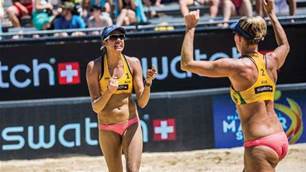
How Australia's beach volleyball women train

How Australia's beach volleyball women train
